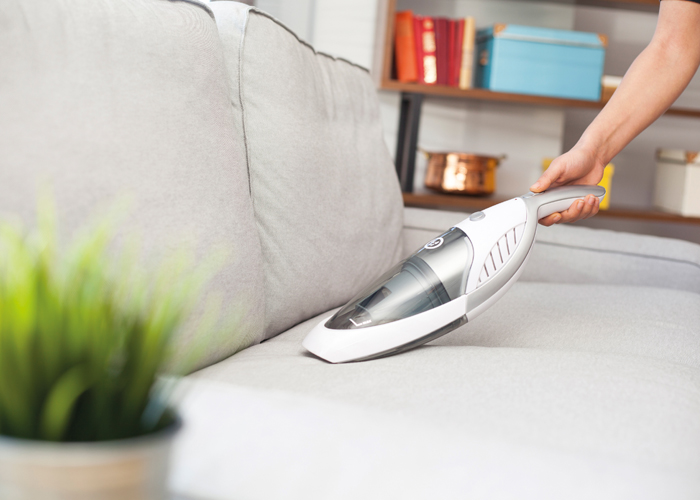Action against allergies
In OTC
Follow this topic
Bookmark
Record learning outcomes
With allergy cases on the rise, pharmacy teams should ensure they can recognise the symptoms and red flags and are able to advise on effective management and prevention
Allergies are extremely common. It is estimated that in the UK, one in three people will suffer from an allergy at some point in their lives and this number is on the rise. Currently, around 21 million adults in the UK have at least one allergy, with 10 million of those suffering from more than one.

An allergy is an immune response by the body to a substance – known as an allergen – which it is hypersensitive to. Almost anything can be an allergen, but examples include grass or tree pollen, house dust mites, pet hair and dander, fungal spores, household chemicals, hair dyes and certain foods or ingredients such as gluten or nuts. The most common allergy is pollen, the reaction to which is known as hayfever or allergic rhinitis. It is estimated that 20 per cent of the UK population suffer from hayfever.
When a person comes into contact with an allergen that they are sensitive to, either by inhaling, swallowing or touching it, their immune system produces an antibody called IgE, which binds to the allergen. This results in the release of histamine from mast cells in the body, which causes the symptoms of an allergic reaction. The time it takes for the symptoms of an allergic reaction to develop varies from within a few minutes of contact to a few hours.
Allergies are particularly common in children and, while many of these are life-long, some allergies will improve or disappear over time. In addition, adults can develop allergies to things they were not previously allergic to. Most people affected by allergies have a family history of allergies or suffer from conditions that are closely related, such as asthma or eczema.
The most common allergy is pollen, the reaction to which is known as hayfever or allergic rhinitis
Symptoms to spot
Most allergic reaction symptms are mild and may even go unnoticed. However, it is important to be able to identify the most common symptoms of an allergic reaction so that they can be treated quickly. Some symptoms are generalised, whereas others cause a local reaction, depending on which part of the body the allergen first came into contact with. Common symptoms include:
- Skin irritation: rash, redness, itchiness, burning sensation, dryness or cracked skin, inflammation of skin or hives
- Nose irritation: sneezing, itching, runny or blocked nose
- Irritation of the eyes: itchy, red or watery eyes
- Chest problems: wheezing, tightness, shortness of breath and/or cough
- Digestive problems: stomach pain, nausea, vomiting and/or diarrhoea
- Irritation of the throat: dryness or burning sensation, itching on the roof of the mouth
- Swelling: of the lips, eyes and/or face.
Mild symptoms of an allergic reaction can be managed with various different products available in the pharmacy and using antihistamines is the recommended first-line treatment. Antihistamines work by blocking the action of histamine and come in many forms to suit a customer’s preference and needs, including tablets, liquids, creams, eye drops and nasal sprays.
For customers with specific symptoms, such as itchy eyes or nose, using eye drops containing sodium cromoglicate, or a steroid nasal spray containing beclomethasone or fluticasone, will help to reduce inflammation and irritation. For mild allergic skin reactions, a soothing cream containing crotamiton may be helpful and will help to relieve itching. If a customer is experiencing swelling of the face, lips or eyes, they should be referred to the pharmacist, who may recommend they see a GP. They should also be advised to take a short-acting oral antihistamine containing chlorpheniramine or acrivastine, which works quickly to relieve symptoms.
Other, more serious, symptoms that suggest a severe allergic reaction are discussed in ‘acknowledging anaphylaxis’ opposite. Anaphylaxis is life-threatening and therefore requires urgent medical attention.
Acknowledging anaphylaxis
Serious allergic reactions are life-threatening and usually develop suddenly and very quickly. This is referred to as anaphylaxis or anaphylactic shock. The most common causes of anaphylactic reactions are foods including nuts and shellfish, insect stings and some medicines such as certain antibiotics and non-steroidal anti-inflammatory drugs (NSAIDs).
Any or all of the following symptoms may be present during an anaphylactic reaction:
• Swelling of the tongue and/or throat
• Difficulty in swallowing or speaking
• Vocal changes (hoarse voice)
• Wheeze, persistent cough or severe asthma
• Difficult or noisy breathing
• Clammy skin
• Confusion and anxiety
• Stomach cramps, feeling sick or vomiting
• Dizziness, collapse or loss of consciousness, due to a drop in blood pressure
• Floppiness in babies.
If someone is suffering from anaphylaxis, an ambulance should be called immediately and the operator told that the condition is suspected. If the patient is carrying an epinephrine auto-injector (Epipen), they should be helped to administer the injection. If they don’t have an auto-injector, pharmacy teams should immediately involve the pharmacist.

Indoor allergen alert
The Covid-19 pandemic has left the majority of the UK population confined to their homes for large swathes of time. While this is important for protecting against the virus, for some people this enforced at-home lifestyle is having a negative impact on other aspects of their health, particularly those suffering from allergies, as many allergens are found in the home, such as house dust mites, pets and household chemicals. In addition, allergy symptoms are often exacerbated by poor indoor air quality resulting from central heating, open fires, poor ventilation and damp. “There are a number of indoor triggers that can either cause or exacerbate allergic reactions such as sneezing or itchy eyes or throat and wheezing,” says Chris Etheridge, medical herbalist and scientific advisor to Puressentiel. “Dampness and mould in the home will release fungi and spores, which are particularly bad for respiratory issues and allergies, while burning candles can omit particulate matter, known as candle soot, into the air.”
Customers who are elderly or have pre-existing health conditions, such as asthma, heart disease or chronic obstructive pulmonary disease (COPD), are particularly vulnerable to indoor pollution. Particles are small enough to get into the lungs and exacerbate symptoms. Dr Andy Whittamore, Asthma UK’s in-house GP, says: “Using your preventer medicine regularly as prescribed is the best way to cope with allergens so your airways are less likely to react to the triggers.” He also recommends carrying a reliever inhaler at all times.
Chris explains that “improving our home air quality is key to preventing and managing respiratory problems such as asthma and COPD”.

In addition, to help customers improve the quality of the indoor air and reduce the possibility of an asthma attack or allergies, they can be advised about:
- Quitting smoking
If they smoke, they should be encouraged to quit as smoking can make breathing symptoms worse and damage the lungs. They can be advised to visit NHS Smokefree to get advice on how to give up smoking, or directed to a local stop smoking service. Alternatively, recommending a nicotine replacement therapy (NRT) product, such as patches or gum, can help them to get started.
- Airing the home
Opening windows regularly to ensure good ventilation is the easiest way to remove polluting particles from the air. Customers living near a busy road should be advised to keep the windows closed at peak traffic times, and hayfever sufferers should be advised not to open windows in the morning or late evening when the pollen count is at its highest.
- Vacuuming
Polluting particles can be removed with a good vacuum that has a high-efficiency particulate air (HEPA) filter, which traps harmful particles such as pollen, pet dander, dust mites and tobacco smoke. It is particularly important for people to vacuum frequently if they have pets, as dogs and cats naturally shed hair and may have pollen attached to their fur if they have been outside.
- Heating the home
Central heating is the best option for customers with allergies to indoor pollutants. Open wood or coal fires can give off tiny particles, as well as sulphur dioxide, which can trigger asthma or bronchitis. Customers should be advised to try so-called ‘cleaner’ fuels, such as those that are low in sulphur or wood that has a ‘ready to burn’ label so it gives out less smoke.
- Cleaning bedding
Customers can be advised about washing bedding in a hot water cycle every seven to 10 days – 60°C is recommended. Hypoallergenic pillows and dust mite-proof covers on mattresses and pillows can help to reduce house dust mites, as well as mould and fungus growth.
- Switching to natural cleaning products
Using e-cloths and microfibre cloths designed to remove bacteria reduces the need to use chemicals that may cause allergic skin reactions. Customers can also be advised to use skincare products and soaps that are hypoallergenic and not fragranced.
- Avoiding aerosol sprays
Everyday products such as air fresheners, cleaning products and candles may contain chemicals called volatile organic compounds (VOCs). Products containing VOCs are usually highly perfumed, have a strong smell and give off gases that can trigger or exacerbate asthma and allergies. Customers with allergies should be advised to avoid VOCs as much as possible.
Moisturise and manage
While lots of allergic reactions affect the respiratory tract, some people may experience skin reactions and these are likely to be more prevalent during the Covid-19 pandemic with more frequent hand washing and household cleaning

Contact eczema – also known as irritant eczema – is a skin reaction triggered by contact with a particular substance and is the second most common type of eczema. It usually affects the hands and is characterised by red, itchy and scaly skin. In severe cases, the skin can become blistered, very dry and cracked.
“Irritant eczema can often be caused by frequent hand washing with soap and water, which can damage the skin barrier. This causes irritation initially, followed by eczema if left untreated,” says Dr Mary Sommerlad, consultant dermatologist at Homerton University Hospital.
Customers should be advised to try to identify their triggers so they can avoid them where possible and take steps to mitigate the risk of flare-ups. “Finding out your triggers can be via a process of elimination or keeping a diary,” says Dr Sommerlad. “Use soaps that protect the skin barrier, reduce exposure to chemicals where possible and wear protective gloves when doing wet work.”
Top treatment tips
Contact eczema usually improves if the irritant is identified and avoided. However, there are products available to help ease the symptoms.
Customers with eczema on their hands should be advised to use a hand wash that contains moisturising ingredients and wash hands using lukewarm water to avoid stripping away natural oils from the skin. They should also be advised to avoid over-using hand gels, especially hand gels containing simple alcohols – labelled as alcohol denat or ethyl alcohol – as these can have a drying effect on the hands.
Pharmacy teams can speak to customers about establishing a moisturising routine that works for them, although they should aim to use a moisturising cream – whether it’s a dedicated hand cream or another moisturiser – on their hands at least four times a day. Having a tube of moisturising cream next to the sink, carrying one with them while out and about and having a tube to hand at work can all be advised.
Using a good hand cream that is oil-based rather than water-based is a good idea, as these help to trap water in the skin by providing a layer of oil on the surface. Not only does this prevent the hands from drying out, it also protects the skin. Glycerine is a recommended ingredient to look for in a hand cream for people with contact eczema. “Glycerine is a naturally occurring substance which mimics the skin's own natural moisturising factor (NMF). It is very hydrating as it acts as humectant, drawing water out of the atmosphere and into the skin,” explains Dr Sommerlad.
For very dry hands, pharmacy teams can recommend a deep overnight treatment that involves applying a thick, oily cream to the hands and then putting on some cotton gloves over the top.
For severe cases of eczema on the hands, where skin is inflamed, red and irritated, customers can be advised to use a topical corticosteroid cream such as hydrocortisone 1% or clobetasone butyrate 0.05%. Both of these are available to buy over the counter for short-term use in mild to moderate eczema. It is important that pharmacy teams advise customers about how to use these corticosteroid creams correctly in order to limit their use and remind them that using a good moisturising cream regularly is important to treat eczema effectively.
Dr Sommerlad highlights that if a topical corticosteroid is the only thing that helps, customers should be advised seek further help from a dermatologist, who can look for a more holistic way to manage their condition.
